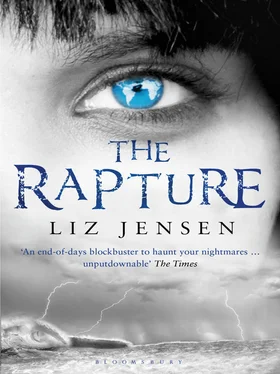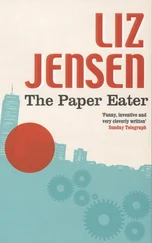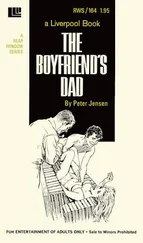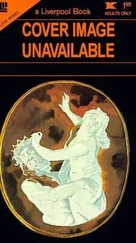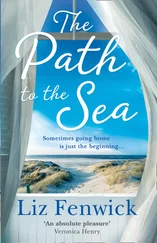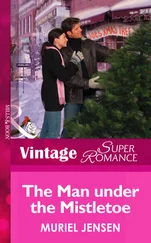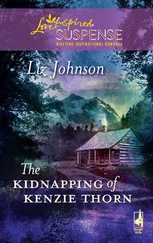‘My life is over ,’ a weeping Brazilian woman in a floral dress tells the world, via a duhbed American voice. ‘Everything has gone. My baby is dead.’ Babies have a way of getting to me. I turn away. Through the window-bars, the sky is full of popcorn clouds.
‘Right. We’ll discuss this later. I can’t hang around,’ I tell Bethany.
‘Yeah. Anger management, right?’ She smirks, then turns back to the screen, where they have moved briefly to other news: Japan’s stock market has gone berserk, an actress who once starred alongside Tom Cruise has taken an overdose, the body-count in Iran has reached half a million. I’m just rolling out of the room when a stupid but brutal thought strikes me. I stop in the doorway and turn round.
‘What else do you feel you have known about in advance?’
She shrugs. ‘Lots of stuff. That earthquake in Nepal two weeks ago? I told you about it.’
‘Did you?’ At a recent session in the art studio I recall her reeling off a list of dates, places and events while drawing a diagram of what might have been a sex act performed by machines. But I was more interested in the artwork than the manic rant that accompanied it.
‘Yes. And you didn’t listen,’ she says, catching the nurse’s eye and offering him some gum, which he declines. I did listen, I think defensively. But I filtered. The way you have to, to make sense of anything these kids say.
‘What else?’
‘Try listening next time,’ she says, yawning. ‘It’s not like it’s going to stop happening.’
‘But this — thousands of people killed or made homeless, and if it hits the city—’
‘It will.’
‘Then thousands more lives about to be ruined—’
‘That’s OK, it’s cool,’ she interrupts. ‘Heard of a fait accompli?
Anyway, how come you suddenly care about all those South Americans? Because you didn’t last time I mentioned it.’ She shakes her head in disbelief. ‘It’s like Dr Ehmet. Hassan to you.
He’s Turkish, right? But when I tell him about the earthquake destroying Istanbul, it’s like talking to the wall.’
‘An earthquake in Istanbul?’ Perhaps the filter needs adjusting. Just as an experiment, of course. My stomach tightens. ‘Remind me.’
‘Next month. Put August the twenty-second in your diary, Wheels. It’s going to make this thing look like a fun ride at Disneyland Paris. Ay caramba!’
When I return two hours later, Bethany is still lounging in her chair, one leg splayed over the arm-rest, chewing her gum and watching Hurricane Stella whirling through Rio, a mass of roiling water, vapour and debris.
‘Oi!’ Bethany greets me with a waved hand in the air. ‘Come and join me.’ I manoeuvre alongside her. On the TV, helicopters pester at the storm’s tail like gnats, relaying images of the disaster zone: filthy corpse-bearing torrents that fill valleys and swamp plains, relief trucks blocked by precipices of rubble, and out at sea, glassy slicks of oil from shattered tankers. As Stella wreaks her worst on Rio, a deeper metropolis is revealed, skewed and ravaged, beneath the flesh of the old: a Hieronymus Bosch landscape of liquid streets and bust-apart shacks and unidentifiable shards that were once part of — what? Playgrounds, schools, bars, hospitals, brothels, homes where children bickered and adults made love and cooked rice and gave birth: the ebb and flow of simple, frustrating, difficult, normal, grief-smudged, passion-fuelled human existence. A fierce sunball hangs low over Rio, French-kissing it, upending day and night. Against it, an aerial view of the city blanketed by a swirl of cloud silhouettes the white statue of Christ the Redeemer on the mountain, with his outstretched arms blessing land, ocean and sky. Absurd, but it has never properly struck me before that the figure itself is standing to form a giant human cross. There’s something both terrible and poignant about the scale of it, as if its vastness and grandiosity is in reverse ratio to the economy that raised it, concrete testimony to a grandeur of spiritual ambition not matched on the ground.
‘It’s a credit to the foresight and expertise of the statue’s designer, Heitor da Silva Costa, that Christ has withstood the force of the three-hundred-kilometre-per-hour winds,’ says a commentator. ‘More than ever, in these terrible times, the Redeemer is a symbol of hope ’
‘Hey, watch this, Wheels,’ says Bethany excitedly. ‘Here comes the good bit.’
‘What do you mean by good bit?’ I snap, furious. Sometimes it’s a struggle to stay professional. Often you fail. And so what.
‘Shhh!’ she commands. I watch her sharp little profile. From the attentive, bright-eyed way she’s observing the events unfolding on the TV, you might think she’d had a hand in orchestrating them. The picture has flipped to another angle. It’s shakier footage this time, live, taken from high above the city, across from the statue. The picture zooms in on the white-robed figure of Christ high above the forest below. ‘A figure of eternal peace,’ says the news commentator. ‘Standing on the mountain-top of Corcovado, in the world’s biggest urban park, encapsulating the spirit of Rio itself and the hopes of a hundred million Brazilians that one day the devastation wrought today by Stella will be…’ The camera seems to jolt, and he hesitates, only to be cut off by a disembodied Portuguese voice which interrupts him in a fast, excited burst. Apart from the earlier camera-jolt, or what seemed to be a camera-jolt, it’s not clear immediately from the image that anything is wrong. Have I missed something? More voices join in, in several languages, all suddenly talking at once, in apparent confusion, as though a hundred TV channels have merged. The image flickers and resettles, the zoom pulls out then hurtles back in. Technical problems.
Then the knowledge slams in, and my heart misses a beat, leaving a time-vacuum in my chest. I say sharply: ‘Oh Bethany, no.’ I can’t look at her because I know she’ll be grinning. I think, Bethany, don’t do this.
The figure of Christ, now pictured in profile, sways and tilts forward.
Vertigo. Then a brief, yawning silence.
There are certain moments which you know you will recall for the rest of your life with perfect clarity. They are stamped with the blood’s instructions: you will remember because you have no choice. There’s a microsecond when the statue seems to do nothing, as if frozen in mid-decision, before it tips into its long and hallucinatingly beautiful death-dive, the white figure falling head-first in what starts as a slow lunge downwards as it disconnects from the plinth, then surrenders to the terrible grace of physics. I catch my breath. Its operatic scale is at once monstrous and riveting. The commentary has stopped. The only backdrop is a profound quiet. And then, with the stretched momentum of a fantasy or a lucid dream, the figure crashes into the mountainside, bouncing like a giant skittle and shattering into fragments as it goes: first one arm cracks and flies off, and then the other, then the torso itself snaps in two, the pieces tumbling at angles to drop into the thick smear of gas below, a mixture of smoke and oil and rain and cloud. A liquidised mirage of a place that might be Heaven and might be—
Watching it, and recognising it, I go hot and cold.
Bethany’s sky-diver.
‘Oh please no,’ whispers a man’s voice on the TV. ‘No, no, no, no, no.’ The silence broken, they all begin talking at once, shock-stimulated into a babble of disbelief, excitement and despair.
I belong to a generation that has seen statues and icons and buildings come tumbling down on TV: Lenin in Russia, the Berlin Wall, Saddam in Baghdad, the Twin Towers. But those topplings meant something to those who caused them. What does this mean? Who is to blame? What can one read into a random catastrophe, an out-of-the-blue event, an ‘act of God’?
Читать дальше
